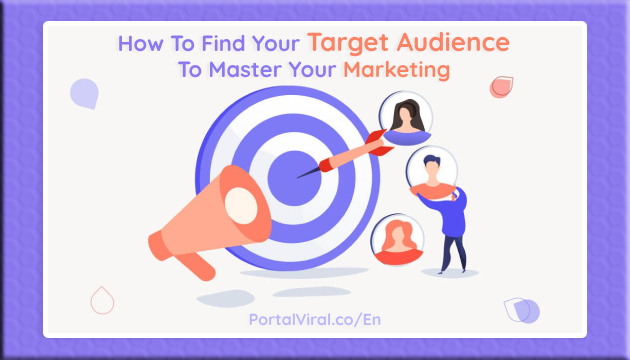The better you know how to find your target audience, the stronger your SEO and marketing strategies will be. Here’s a detailed plan to help you become familiar with your audience.
When marketers fully grasp who their ideal customers are, they can make smarter choices about where to advertise, what messages to use, and when to do it. Let’s explore what a target audience means and how you can identify yours step by step.
What Is a Target Audience?
Your target audience is the particular group of consumers who are most likely interested in your product or service. They are the people who should see your advertising campaigns. This group can be defined by factors like age, gender, income, location, interests, and more.
The better you understand your audience, the stronger your digital marketing campaigns will be. So, very important for you to know how to find target audience.
Every year, around $37 billion is spent on advertising that doesn’t effectively reach this target audience. You can learn more about this issue by downloading our white paper, “The Waste in Advertising,” which will only take 5 seconds of your time.
Your target audience can vary in size, depending on what you’re selling. For instance, if you sell shoes in general, your target audience would be broad. Because men, women, and children all wear shoes.
However, if you specialize in high-performance running shoes, your target audience becomes more specific. It might consist of elite athletes aged 20-40 who are interested in running or have run a marathon.
Regardless of the size, it’s crucial to define and categorize your target audience. This helps you create compelling messages that will connect with them and identify the communication channels they prefer.
The Advantages of Understanding Your Target Audience
For marketers, having a clear understanding of their target audience is absolutely essential. This knowledge shapes every marketing plan and strategy you implement. For example, running an advertisement during the Super Bowl may seem like a great way to reach a massive audience, but it comes at a high cost.
Moreover, only a quarter of the viewers might actually be interested in your product. On the other hand. If you know that your target audience reads a particular magazine or watches a specific TV show, your advertisement will reach fewer people but the right ones.
For instance, if you sell running shoes, advertising in running magazines would likely be a better fit for your target audience. Selecting the right media is crucial for achieving a favorable return on investment (ROI) for your marketing efforts.
Beyond improving ROI, understanding your target market enables you to build relationships and communicate more effectively with consumers. You can create marketing materials that resonate with specific customer personas and align your brand with the interests and values of those most likely to purchase your product.
This is especially important in an era where consumers expect personalized and highly targeted ads. In fact, 80 percent of consumers indicate that they are more inclined to engage with a brand that offers personalized interactions.
Types of Target Audiences
Your business can have various target audiences depending on your marketing focus and objectives. Sometimes, you might narrow down your targeting to be very specific.
For example, if you own a landscaping business, you could concentrate on attracting customers from one particular town by offering a special event or discount tailored to that area to grow your customer base there.
When identifying your target audiences, it’s important to align them with the marketing channels you regularly use. Here are some examples:
1. Event
You can host events that target an entire community, as in the landscaping company example, or ones tailored specifically to potential customers. You might also organize events for your current customers or prospective partners.
2. Community
Running a Slack or Discord group that connects potential customers in similar roles or creating a community that brings together customers using your product can be effective.
3. Ad
Depending on your goals, you could run Facebook Ads to encourage repeat business, Google Ads aimed at prospects searching for a solution, or Instagram shopping ads targeting customers of your competitors.
4. Email
You may have a newsletter that provides tips for your general target audience, email flows designed to nurture leads, and triggered emails intended for current customers.
5. Social Media
Your social media strategy might involve sharing thought leadership content to appeal to influencers who can help spread the word, creating how-to videos for potential customers, or hosting a series of interviews with figures of interest to your audience, whether they are authors, celebrities, or experts.
How To Find Your Target Audience?
Here’s a methodical guide to help you how to find your target audience better. This understanding will enable you to craft a digital marketing campaign that’s more likely to succeed and elevate your skills in marketing.
1. Conduct Market Research
To gain insights into your target audience, conducting traditional market research is essential. The aim of this research is to collect comprehensive information about the specific group you are targeting, which you can then use to create detailed personas.
Here are five methods to gather this information effectively:
- Collaborate with Other Departments: Engage with various departments within your organization, such as customer service, sales, and product development. They often have valuable firsthand knowledge about customer preferences, pain points, and feedback.
- Utilize Data Gathering Tools: Leverage data collection tools and analytics software to extract valuable insights from sources like your website, social media platforms, and customer databases. These tools can help you analyze trends and customer behavior.
- Explore Social Networks: Investigate social media platforms and forums where your target audience frequently participates. Analyze discussions, comments, and feedback to understand their interests, concerns, and preferences.
- Design Quantitative Surveys: Create surveys with structured questions to gather quantitative data about your target audience. Distribute these surveys through various channels, such as email or your website, and analyze the responses to identify trends and patterns.
- Conduct Interviews: Engage in one-on-one interviews or focus group discussions with individuals who represent your target audience. These qualitative interactions can provide deeper insights into their motivations, challenges, and decision-making processes.
By combining these research methods, you can compile a comprehensive understanding of your target audience, enabling you to build accurate and effective personas to inform your marketing strategies.
Also Read: What is Marketing Stregy and How To Create Your Own
2. Developing Your Personas
Developing personas is an effective way to dig deeper into the specific groups within your target audience, particularly if your product caters to a broad range of consumers.
Personas help you identify the overall demographics, personalities, and requirements of your target customers. For instance, the persona of “Fran, the First-Time Runner” will have different needs compared to “Sam, the Seasoned Pro.”
These personas are constructed based on data, surveys, digital interactions, and any other relevant information that marketers can gather to create a more comprehensive understanding of their buyers.
This information might encompass details like hobbies, TV preferences, favorite publications, and more. It’s generally recommended that marketers create between three to five personas to cover various segments of their target audience.
3. Clarify Who Your Target Audience Isn’t
It’s important to clarify how to find who your target audience isn’t. While some consumers may closely align with your target demographic, they might not respond to your messaging. It’s valuable to be precise in identifying who falls within your audience and who doesn’t.
For instance, is your demographic all women or specifically women aged 20 to 40? This distinction helps ensure that your advertising budget is not wasted on segments that are unlikely to generate meaningful returns.
4. Examine Your Competitors
No matter what you’re offering, you’re bound to have competitors. And you can gain insights from them.
Study who your competitors are focusing on in their marketing efforts. Where do they advertise? Is it on platforms like Facebook, Instagram, or Twitter? Who are they trying to reach with their advertisements? What challenges are they highlighting? Analyze their advertisements, messaging, and overall brand to build a target audience profile and compare it to yours.
This includes identifying areas of overlap and divergence. Identifying overlaps can provide clarity, and recognizing differences can help you better communicate what sets your brand apart.
5. Keep Refining Your Approach, When Find Your Target Audience
As you collect more data and engage with customers, your understanding of your target audience will become more precise. With this information in hand, it’s crucial to regularly fine-tune and improve your buyer personas to achieve optimal results.
Final Advice
The information we’ve discussed primarily pertains to marketing. To run a successful SEO or digital marketing campaign, you must apply established marketing principles. While certain strategies may have evolved with time, what hasn’t changed is that your audience remains composed of people.
While it’s popular to discuss the changing nature of consumers, effective marketers also pay attention to what has remained constant: human instincts, motivations, desires, and needs. The more you understand how to find your target audience, including your target customers and competitors, the greater success you’ll achieve with your digital marketing efforts.




